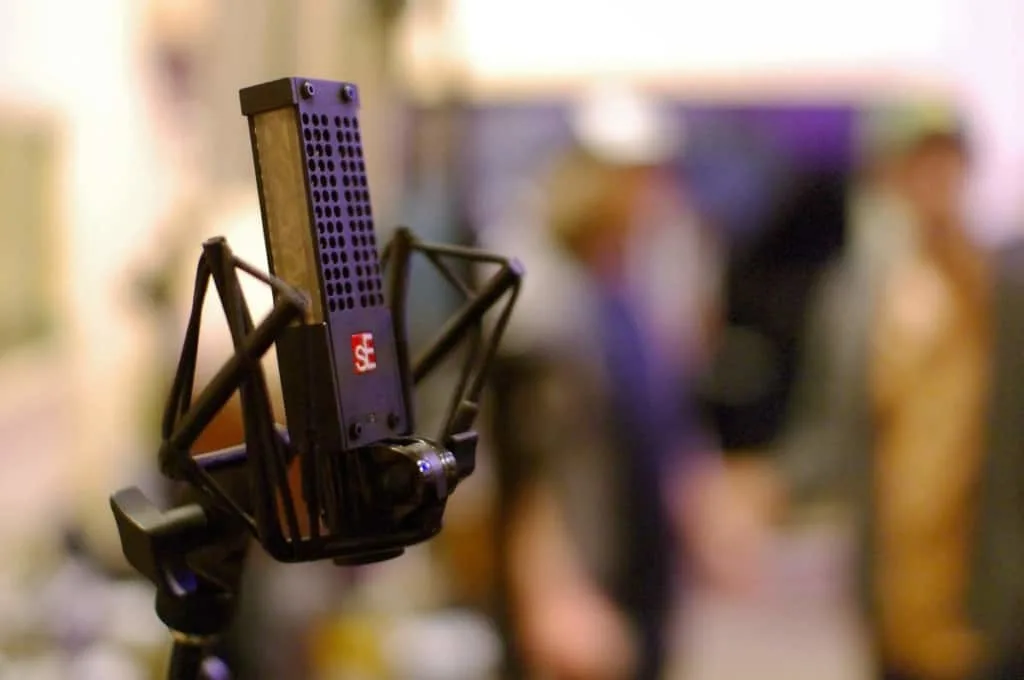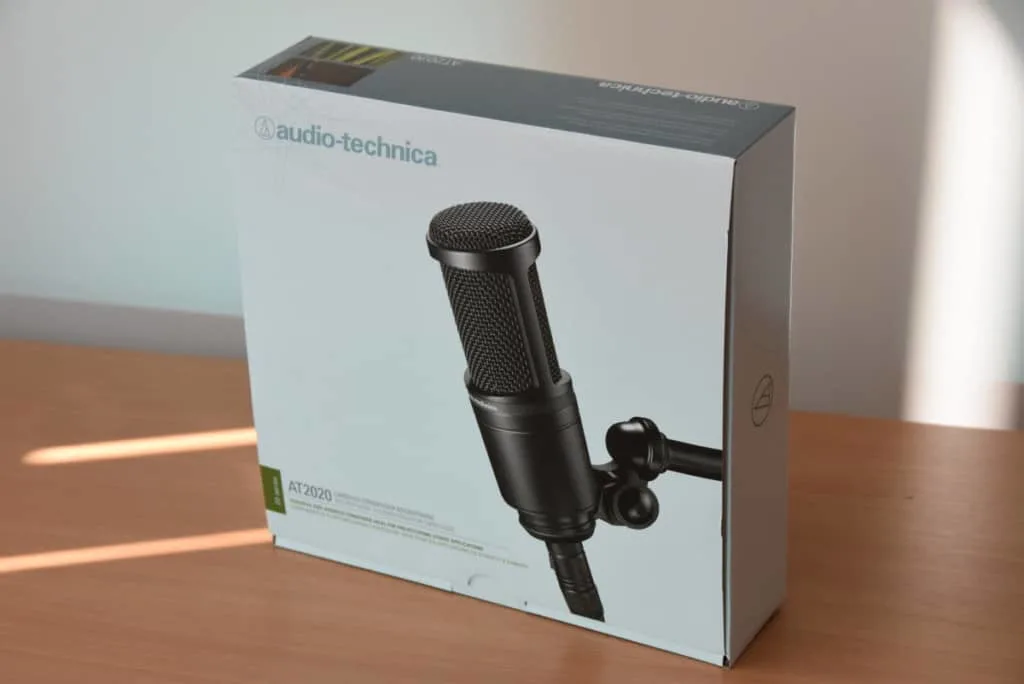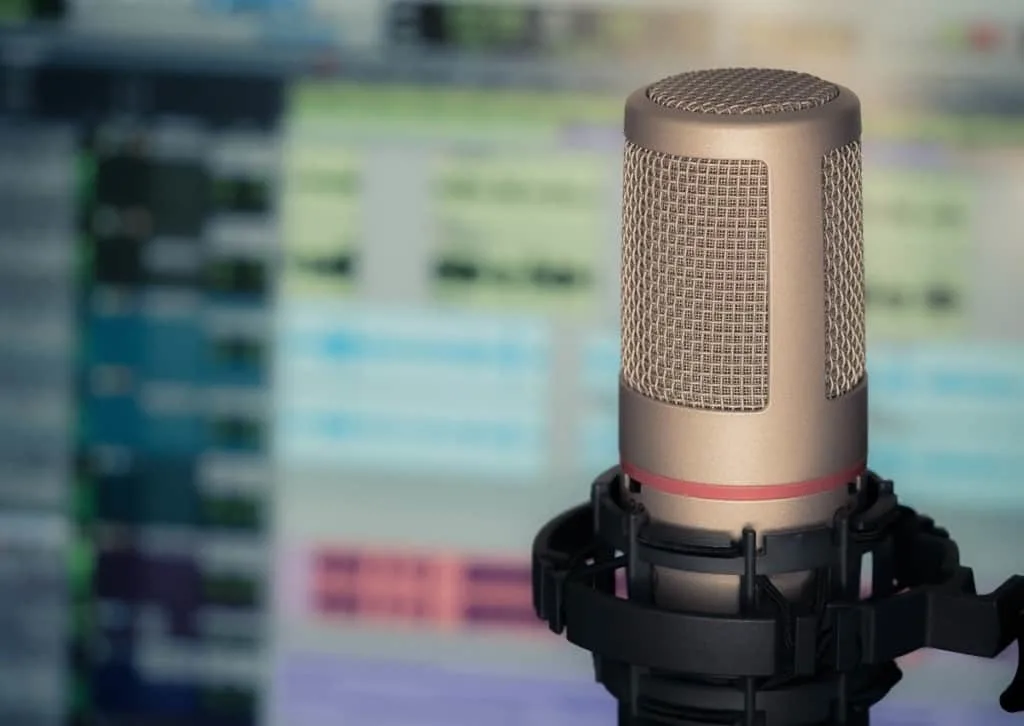Don’t worry if you don’t know what a ribbon microphone is.
They are one of the music industry’s best-kept secrets until today. That being said, most of those amazing vocals in the 1920s and 30s were very likely captured by a ribbon mic. As the saying goes: “there are two kinds of sound engineers: the ones who love ribbons and the ones who haven’t discovered them yet.”
So, what is a ribbon microphone?
A ribbon microphone is an older style of microphone built with a technology that is previous to condenser microphones. A very thin sheet of metal vibrates among two magnets creating a magnetic field that changes correspondingly to how the sheet moves with air. This sheet movement transduces into sound. Ribbon Microphones are naturally bi-directional because of their construction and famous for picking up high frequencies as well as acoustic instruments in a very realistic way.
Ribbon Microphones can be used in a variety of situations and can prove to be the flavor that your recordings were missing until today.
Are you ready to learn everything you need to get your journey to ribbon-land started? Let’s do it.
How Do Ribbon Microphones Work?
The first ribbon microphone became commercially available as far back as 1931. If you remember those big RCA microphones used for broadcasting, those were ribbon microphones inside a huge casing (approx. weight was 8 pounds!).
Modern ribbon mics don’t look like that at all.
The principle used in the manufacturing of those microphones and modern ones, though, remains the same. It is a very thin sheet of corrugated aluminum (or a modern replacement) suspended between two magnets that generate a powerful magnetic field.
Since those magnets are located on the sides, they work really well in isolating noises while creating a bidirectional pattern naturally. The sheet in the middle moves when hit by air and hence creates the sound that is transduced to the cable and then to whichever destiny it might have.
- It is important to note that ribbon microphones were overtaken by condensers because they have a rather weak gain and can be, especially in those early days, very fragile.

Ribbon microphones fell into oblivion but once you hear them in action you’ll realize that the audio quality, especially in fast, dynamic sources is superb. Recording a guitar cabinet, wind instruments, acoustics, or even cymbals on a drum kit with a ribbon microphone will get you very close to what the human ear perceives naturally.
Take a look at the sE ElectronicsX1R Ribbon Microphone here on Amazon. This is a modern-day ribbon microphone.
Are Ribbon Microphones Dynamic Or Condensers?
Ribbon microphones are usually considered a third type of microphone but are actually not; they are dynamic microphones.
Ribbon microphones are a special type of dynamic microphone because they are considered by purists as the purest form of transducer available today. When we think about dynamic microphones we usually think of live performances, capturing loud instruments and such.
Well, ribbon microphones are the refined part of those, the ones able to capture and transduce faithfully sounds more like a condenser would but with different technology.
Do Ribbon Microphones Need Phantom Power?
Some ribbon microphones do use phantom power making them less preamp-dependent and raising the level of the output.
I have written an article that explains what phantom power is. You can read it here.
Let’s say to begin with that the difference between the ribbon microphones with phantom power and condensers with phantom power is that the 48v current feeds an internal preamp rather than the capsule itself. A good example of this is the lovely, small, and great-sounding Audio Technica 4081.
On the other hand, it is important that you know that if you plug in a vintage ribbon microphone with no internal transformer to a mixer or any source that has phantom power active, you can literally fry it. Always check that before you do it.
One excellent condenser microphone that is making a huge impression as a great all-rounder is the Audio Technica AT-2020.
Check out this excellent microphone here on Amazon

Active And Passive Ribbon Microphones
Here’s the category where ribbon microphones with phantom power go: they are called active ribbon microphones.
They are designed to overcome a typical ribbon problem which is the lack of consistency you get from one preamp to the next. Ribbon microphones are so sensitive and low-output that they need pairing with the right preamp to work properly.
In this regard, some brands commercialize the preamp to go with the microphone so you can make them sound the way they were designed to sound.
What Are The Benefits Of Using Ribbon Microphones?
This is, by no means, a list of all the benefits but the ones I think are more relevant. The list could go on forever.
· Natural sound – Ribbon microphones are very well-known for having a great natural response. They are considered to be the transducer type that resembles the human ear the most. This can be a game-changer when capturing the sounds of a high-quality acoustic guitar, piano, horns and such. With little to no EQ, they sound pleasant from the get-go.
· Tight lows – The low-frequency response of ribbon microphones are close to that of a condenser but in a less muddy, more natural way. They work perfectly on a tuba for example or even a kick drum. Retaining lows in a musical way is something very difficult to do and ribbon mics excel at it.
· Detailed, harmonic highs – It is not uncommon in really fancy studios to find a couple of Royer ribbon mics as overheads. Also, instruments like violins, trumpets, flugelhorns clarinets, and such that cover a wide range of frequencies and produce detailed highs benefit largely from this type of mic. Finally, vocals with ribbon microphones are among the most interesting takes you can do in a studio situation. Here is a cool video with some tips and techniques about how to do it.
· Natural bi-directional pattern – Capturing live performances within a studio environment is, perhaps, the most fun you’ll have working as an engineer. Many of these moments will require you to capture naturally many sounds in the same room. Ribbon microphones can work wonders in these case scenarios because you’ll get the feel of the two sides without having to worry about the low end being muddy as you would with a condenser.
· Live applications – As technology kept evolving, ribbon microphones became more reliable and sturdy and made it to the biggest stages in the world. For example, replacing a small diaphragm condenser with a ribbon microphone to capture the wood and dynamics of a strummed acoustic guitar can create a much more intimate moment with the audience.
Things To Be Aware Of With Ribbon Microphones
Not everything is a success with ribbon microphones; there are some things you should still be aware of.
· Storage – The way a ribbon microphone works is by suspending a very thin metal sheet in the center of a very powerful magnetic field. When you keep your ribbon mic flat on his back (like humans sleep, for example), you are at risk that the sheet of metal gets bent because of the magnetic force. If the sheet sags, then the microphone gets damaged for good. So, always keep your ribbon microphones on their feet or sleeping like bats upside down.
· Wind/strong sound – Since the metal sheet is so thin and wide, a strong wind or a very powerful sound can stretch the ribbon material damaging the microphone. To prevent this from happening, what you should do is to always tilt it to an angle facing the source. This way the ribbon material won’t be exposed to the air in all its flat width.
· Proximity factor – Ribbon microphones can capture beautiful, musical, articulated lows and at the same time can suffer greatly from the well-known proximity effect. This effect is the one that increases the low response on microphones when the sound source gets closer. It is great to create a sensation of intimacy but can be unwanted in more than one scenario. It is important to also notice that being too far from the source is also a problem because it is a binaural microphone and you want to maximize the sound source and not the ambient. Maybe it’s not a problem at first hearing, but when you start compressing, you can start having problems. The key with ribbon microphones is finding that sweet spot it sounds its best: not too far, not too close.

Final Thoughts On Ribbon Microphones
The reason I decided to write this blog post was that I feel ribbon microphones are not so popular because of all the myths around them.
Not all of them are true. I remember the first time I worked with one I thought it looked like a Jedi lightsaber and so I mimicked a fight scene with it and almost got kicked out of the building.
This is a myth: modern ribbon microphones are not at all so fragile. But what I remember the most about that session was the first time I heard the sound of the ribbon through the monitors. I wondered why hadn’t I used them before in a million scenarios when I could have.
Ribbon microphones really do sound very close to the human ear. I would say that applying an equalizer to an acoustic guitar captured with a ribbon is a crime. It sounds amazing just as it is. Maybe a little compression to tighten it up, but it is almost perfect.
They are not the cheapest option out there and I don’t consider them to be beginner gear; it is a microphone you get to, not that you start with. That being said, and back to why I started writing this post: there should be many more ribbon microphones out there in studios that can afford them.
I have written an article on Dynamic Vs Condenser microphones. You can check it out here
Don’t let the myth of a fragile microphone deny the world of what ribbon microphones can give to music.
If you have the chance to buy one, don’t think twice and make the investment, it will pay off in sound quality in years to come.
Happy (ribbon) recording!
